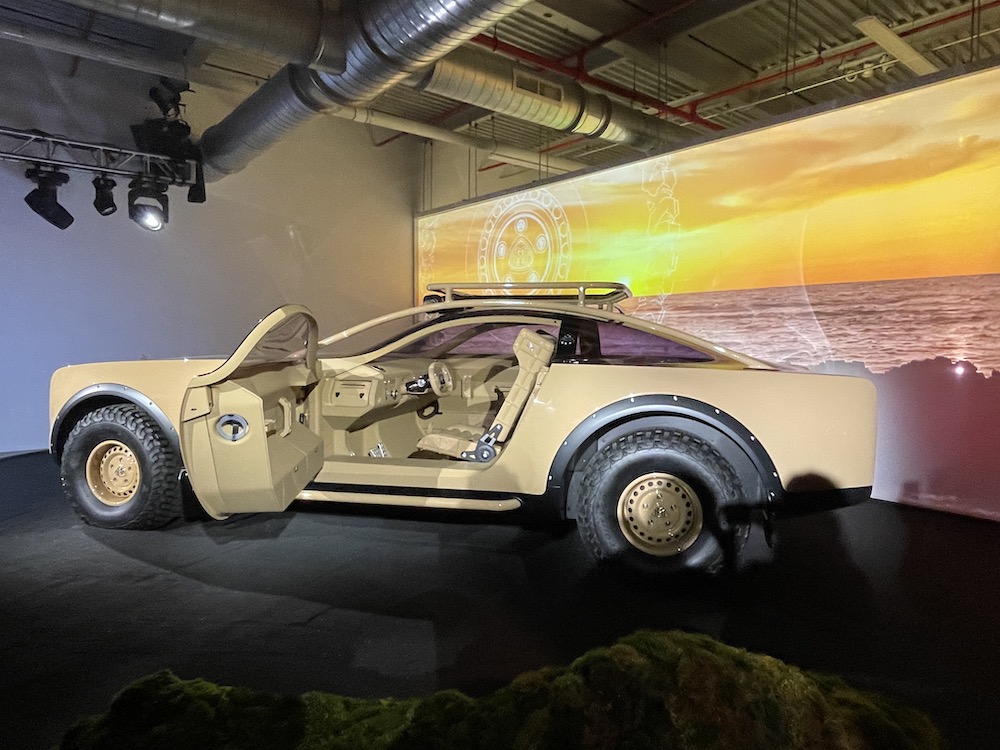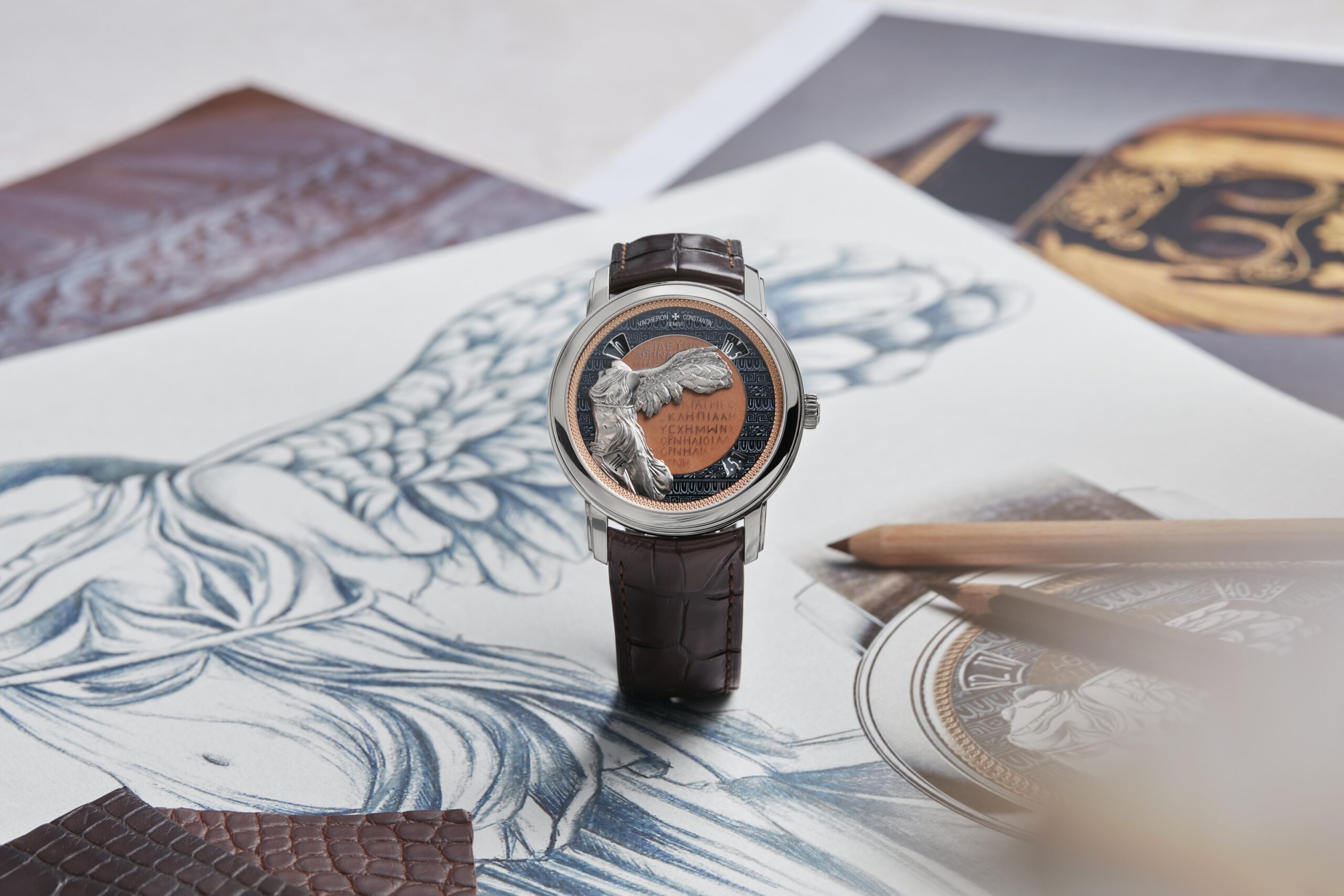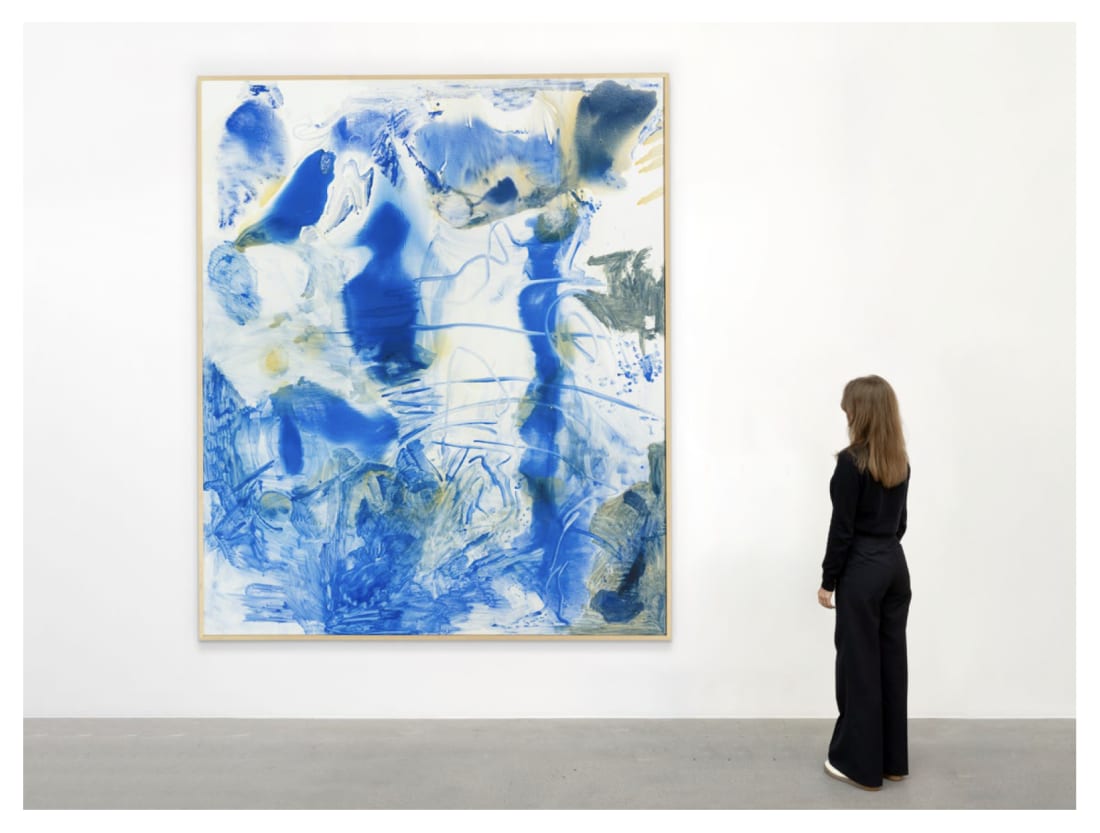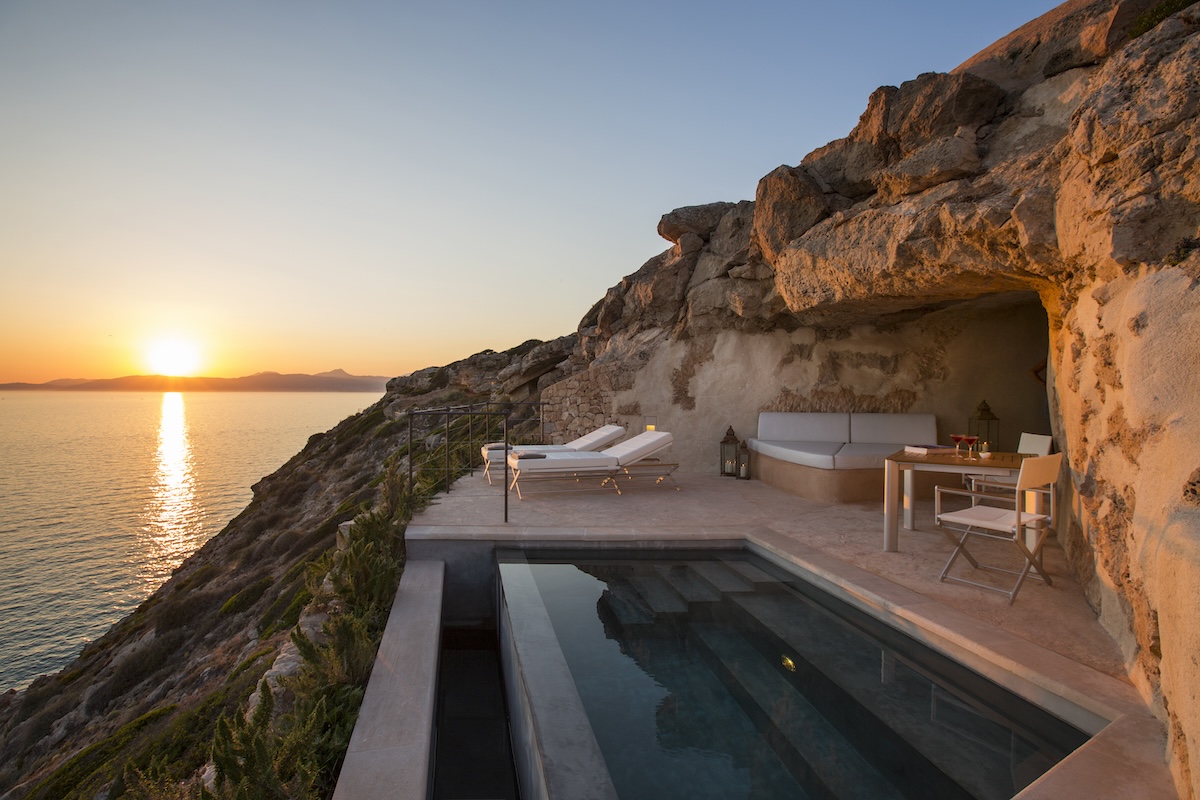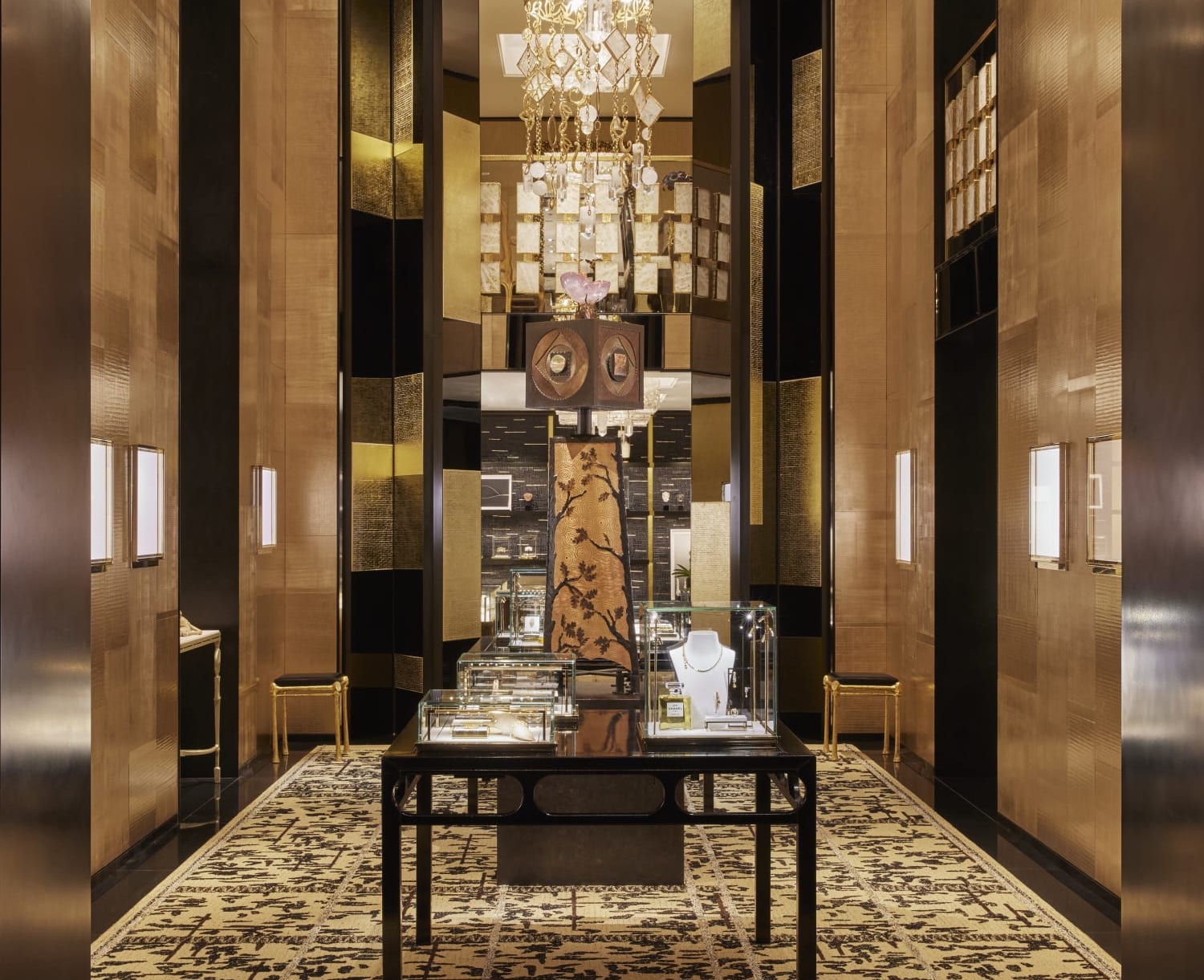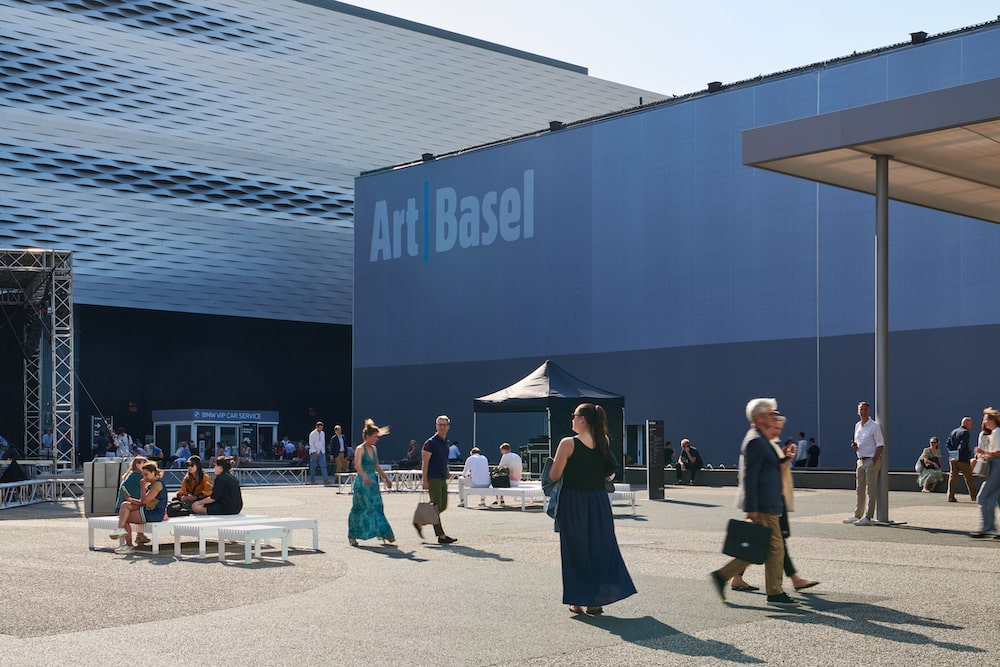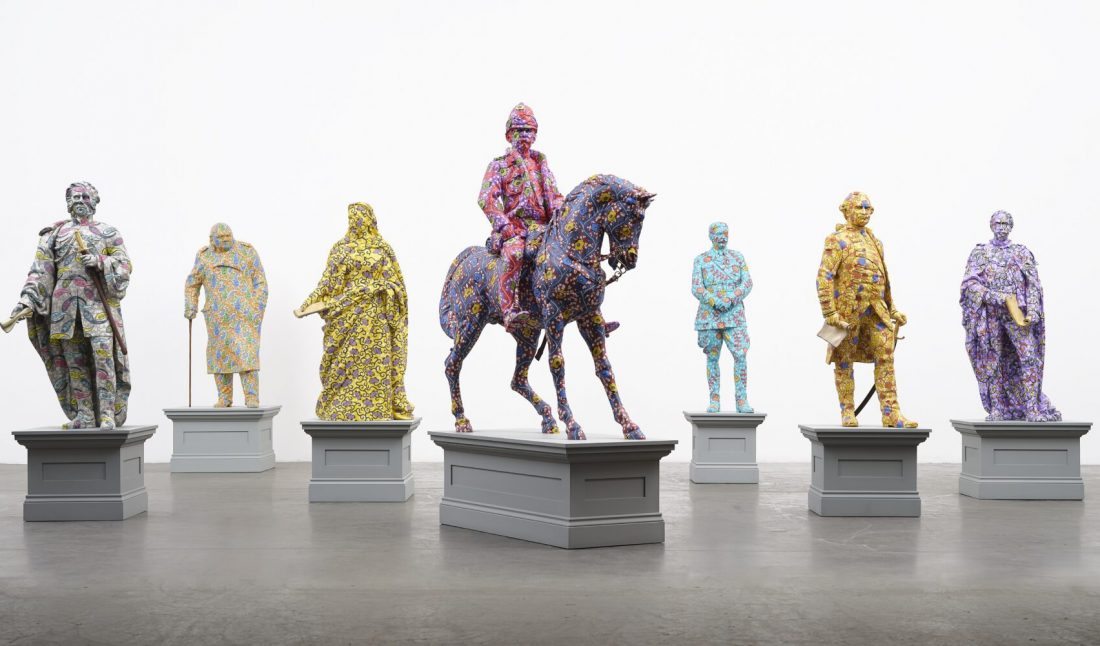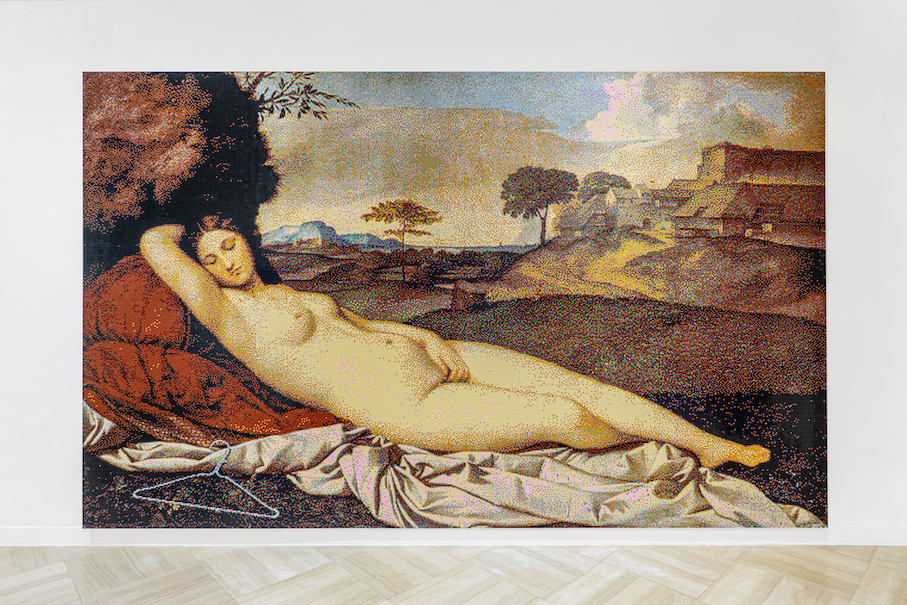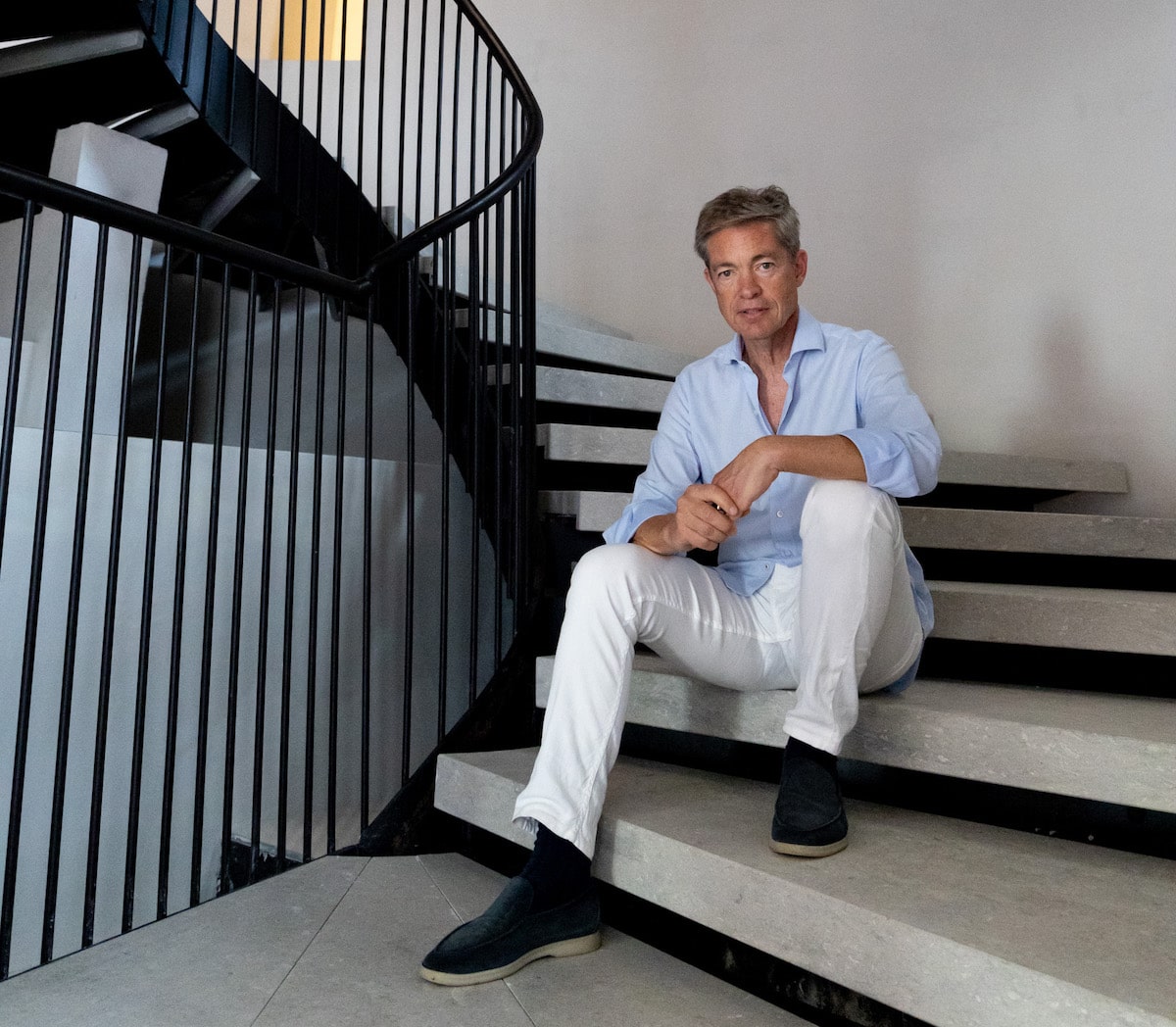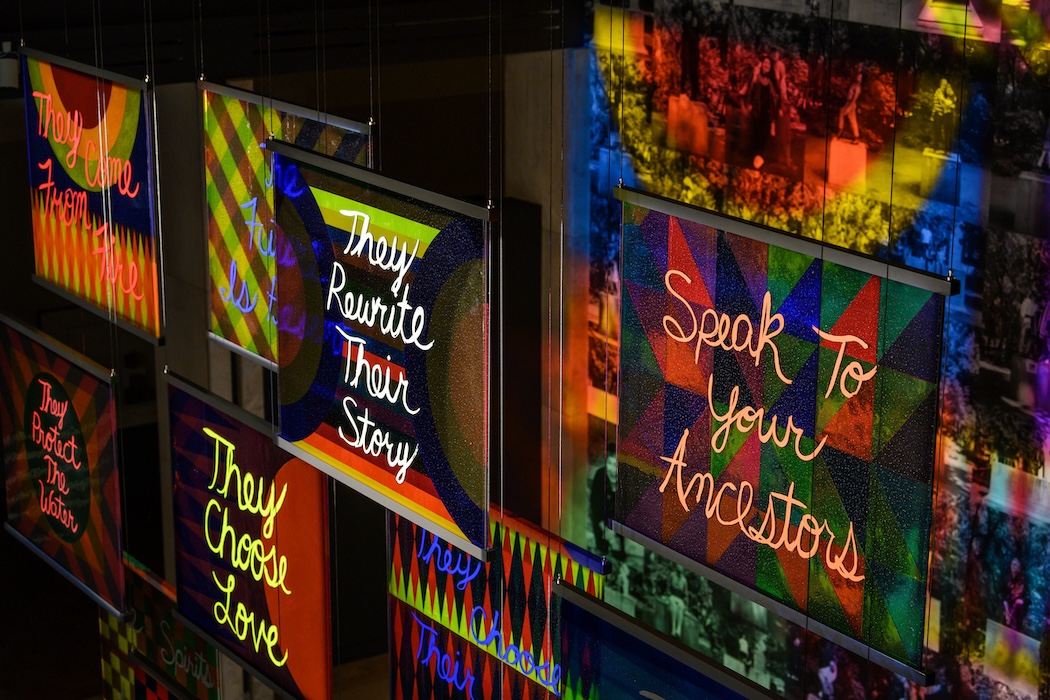Yinka Shonibare is arguably the most influential British-Nigerian artist of our time. He is renowned for his thought-provoking explorations of colonialism, race, class, and globalization, and has established himself as a pivotal figure in contemporary art. His multifaceted work, spanning painting, sculpture, photography, installation, film, and performance, delves into the complexities of identity and the intertwined histories of Africa and Europe. Central to Shonibare’s oeuvre is his use of brightly colored Dutch wax-printed cotton, which he transforms into elaborate costumes and sculptures, notably headless figures that challenge historical narratives and cultural assumptions. Through iconic pieces like Nelson’s Ship in a Bottle and Scramble for Africa, Shonibare critiques the legacies of imperialism and prompts reflection on modern global interdependencies and cultural intersections.
In this interview, we delve into the profound insights and creative vision of Yinka Shonibare CBE RA as he discusses his recent participation in the Nigeria Pavilion at the prestigious 60th International Art Exhibition of La Biennale di Venezia and his much-anticipated exhibition “Suspended States” at Serpentine. With an unwavering commitment to social engagement and a keen eye for interrogating power dynamics, Shonibare offers illuminating perspectives on restitution, boundary suspension, and the transformative potential of art in inspiring cultural dialogue.
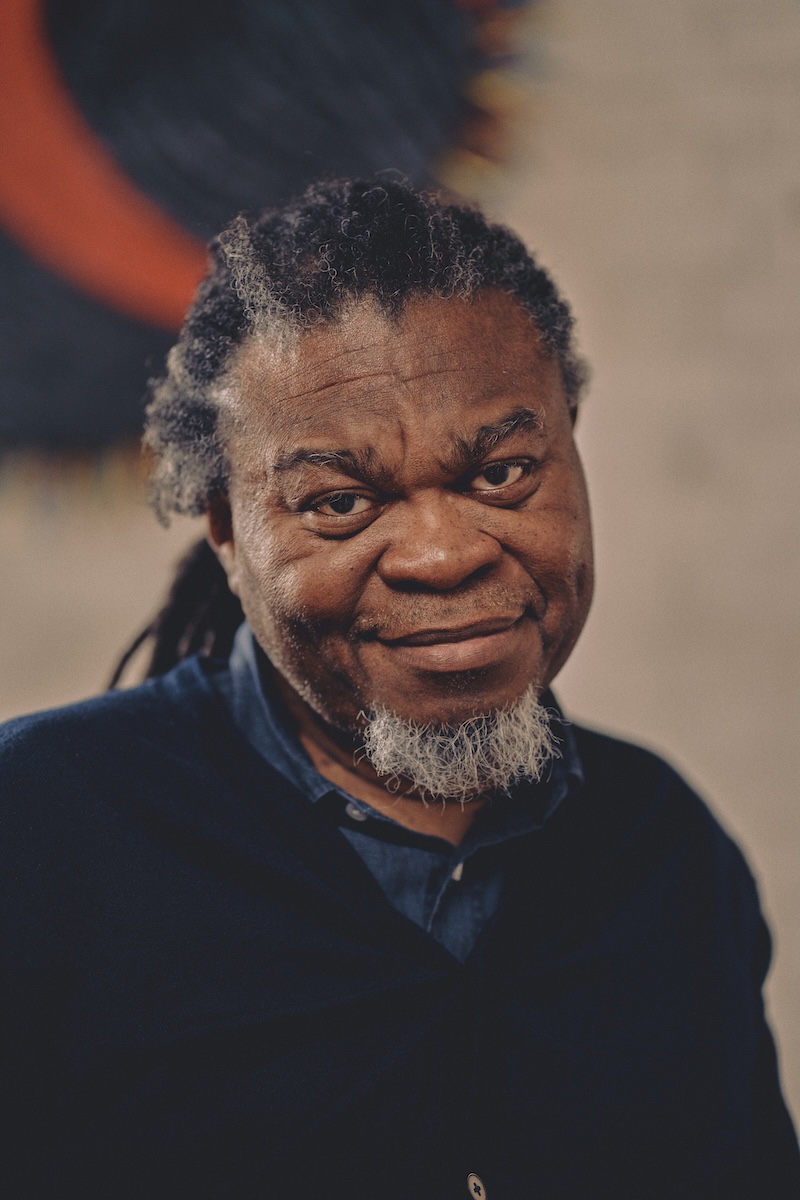 Portrait of Yinka Shonibare CBE RA. Photography by Tom Jamieson. Image © Yinka Shonibare CBE and Tom Jamieson.
Portrait of Yinka Shonibare CBE RA. Photography by Tom Jamieson. Image © Yinka Shonibare CBE and Tom Jamieson.
Yinka Shonibare Exhibits Work in the Nigeria Pavilion in Venice
WHITEWALL: Could you delve into the inspiration behind your sculptural installation for the Nigeria Pavilion at the 60th International Art Exhibition of La Biennale di Venezia, particularly focusing on the significance of the title “Monument to the Restitution of the Mind and Soul” and its exploration of the Benin Expedition of 1897?
YINKA SHONIBARE: The inspiration for my work centers on the ongoing debates about the restitution of cultural artifacts looted during colonial times. Specifically, in 1897, the British conducted a punitive expedition in the Kingdom of Benin, looting thousands of priceless artifacts, including the renowned Benin Bronzes, which are now housed in various museums, notably the British Museum. Since the 1960s, Nigeria has been requesting the return of these artifacts, making it a highly politicized issue. This is not an isolated case; similar debates are ongoing, such as with the Elgin Marbles in Greece.
For the Venice Biennale, I felt it was crucial to highlight these restitution debates, especially with the involvement of the curators who are also working to establish the Museum of West African Art. These looted objects could potentially be returned to this museum in the future. My goal with “Monument to the Restitution of the Mind and Soul” was to emphasize the beauty and spiritual significance of the Benin Bronzes and other looted artifacts. The installation showcases a wide array of items taken during the expedition, including household objects, masks, and ritual artifacts.
Moreover, Benin had a rich history of trade with the Portuguese before the British invasion, as evidenced by Portuguese objects, canons, and garments in the installation. This illustrates the complex and prosperous cultural exchanges that existed before colonial disruptions. By presenting this history, I aim to help Africans and the diaspora reconnect with their heritage and ancestry, reinforcing the importance of cultural restitution. That’s why I titled the installation “Monument to the Restitution of the Mind and Soul.”
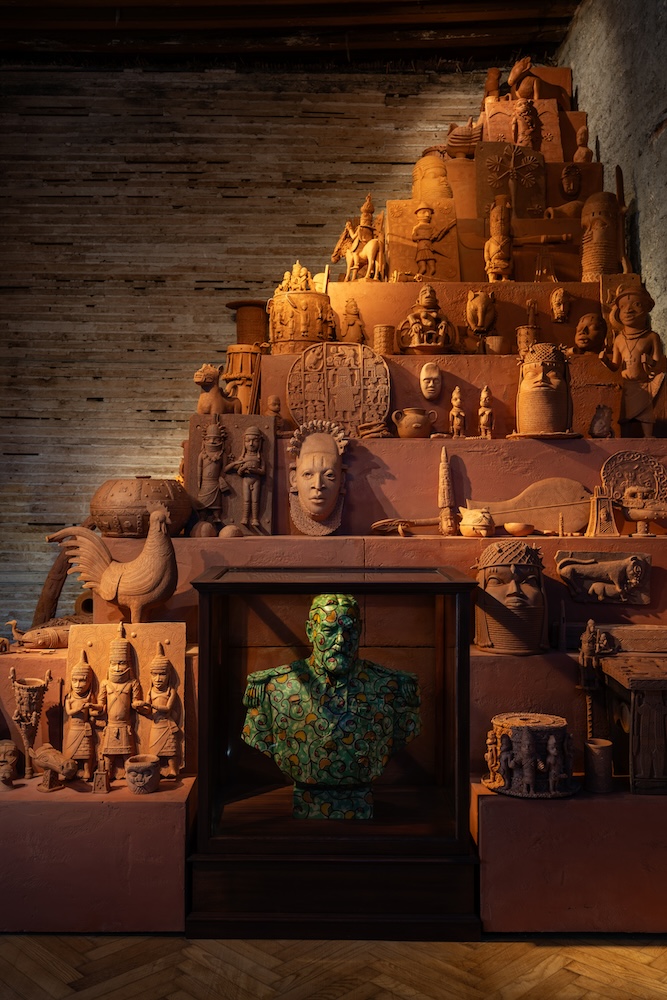 Yinka Shonibare CBE RA, “Monument To The Restitution Of The Mind And Soul”, 2023. Installation view, Nigeria Imaginary at the Nigeria Pavilion at the 60th International Art Exhibition — La Biennale di Venezia. © Nigeria Imaginary. Courtesy Museum of West African Art (MOWAA) and Nigeria Imaginary.
Yinka Shonibare CBE RA, “Monument To The Restitution Of The Mind And Soul”, 2023. Installation view, Nigeria Imaginary at the Nigeria Pavilion at the 60th International Art Exhibition — La Biennale di Venezia. © Nigeria Imaginary. Courtesy Museum of West African Art (MOWAA) and Nigeria Imaginary.
Yink Shonibare’s “Suspended States” on View at Serpentine
WW: “Suspended States” is your first solo exhibition in London in over 20 years. What significance does this return hold for you, and how do you envision your artistic practice evolving in the future, particularly in the context of ongoing global debates and movements?
YS: While “Suspended States” is my first solo exhibition in a public space in London in over 20 years, I have had a number of shows in commercial galleries during that period. My last public show was indeed over two decades ago at the Camden Art Centre. The first time I exhibited at the Serpentine was in 1992 as part of the Barclays Young Artist Award, shortly after finishing my studies. Returning to the Serpentine now is significant because it feels like coming full circle and reconnecting with a central space in London’s art scene.
Exhibiting at the Serpentine again is a wonderful opportunity to showcase my work in such a prominent and respected venue. My work is always evolving, and I strive to keep it relevant to the current global debates and movements. The themes I explore—colonialism, identity, and cultural heritage—continue to resonate with audiences, especially in today’s climate of social and political change.
Looking forward, I see my artistic practice continuing to adapt and respond to the evolving narratives and issues in the world. I aim to create works that engage with contemporary debates, provoke thought, and foster cultural dialogue. By doing so, I hope to maintain the relevance of my art and contribute meaningfully to ongoing discussions on identity, heritage, and social justice.
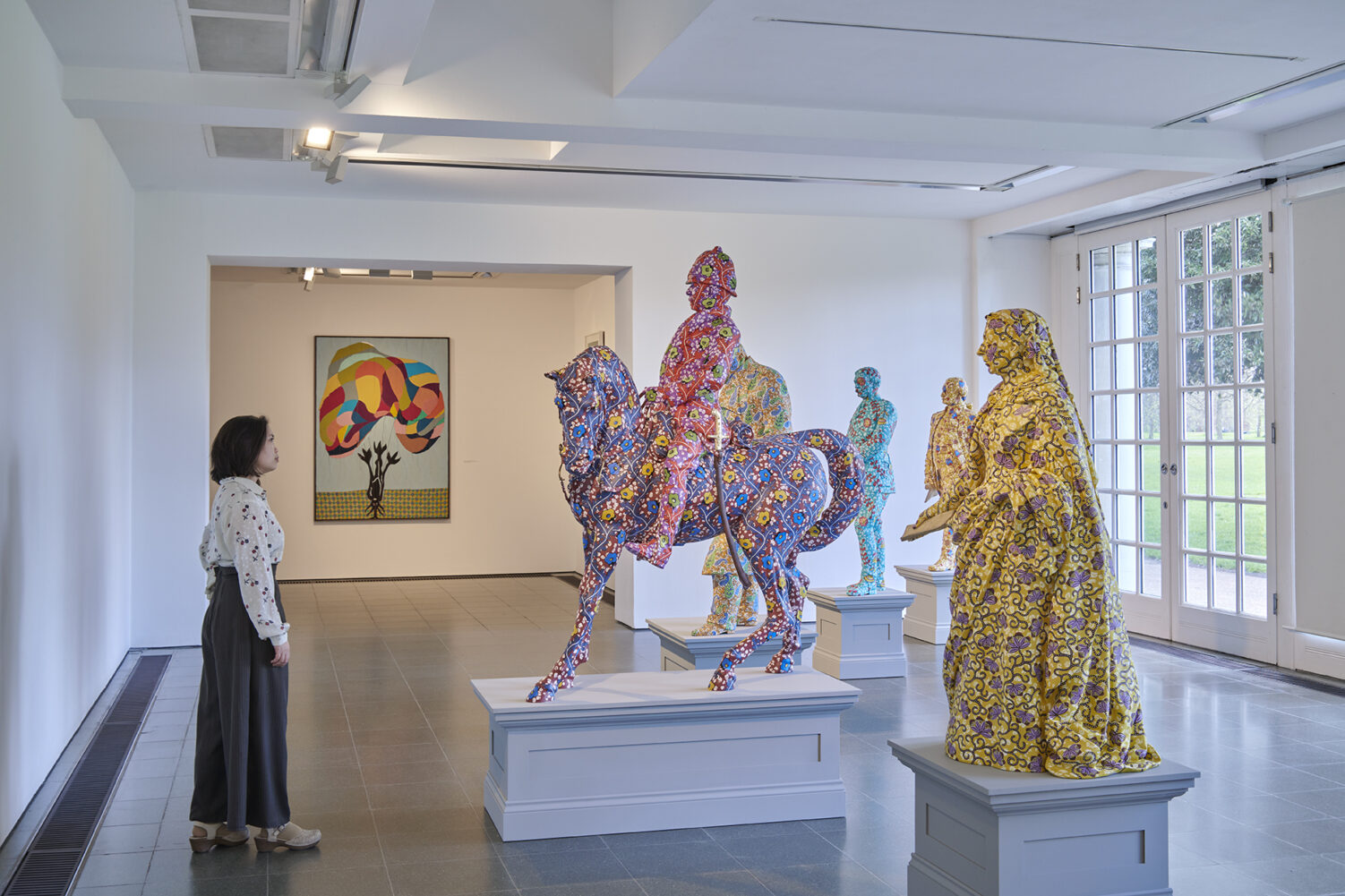 Yinka Shonibare CBE: “Suspended States”, 2024. Installation view, Serpentine South. © Yinka Shonibare CBE 2024. Photo: © Jo Underhill. Courtesy Yinka Shonibare CBE and Serpentine.
Yinka Shonibare CBE: “Suspended States”, 2024. Installation view, Serpentine South. © Yinka Shonibare CBE 2024. Photo: © Jo Underhill. Courtesy Yinka Shonibare CBE and Serpentine.
“I aim to create works that engage with contemporary debates, provoke thought, and foster cultural dialogue,”
— Yinka Shonibare
WW: Your use of Dutch wax print in your artwork has become a signature element of your practice, symbolising the intertwined relationship between Africa and Europe. How does this material choice inform your exploration of colonialism and cultural identity in both the Serpentine exhibition and your Biennale participation?
YS: I use Dutch wax fabric in my work to reflect on colonial history and issues of identity. The inspiration for Dutch wax fabric originates from Indonesian batik, a traditional fabric dyeing technique using wax-resistant methods. During the 19th century, Dutch manufacturers began producing these fabrics and selling them in West Africa, where they became incredibly popular and integrated into local cultures.
For me, these fabrics serve as a language. They are not an end in themselves but a means to explore and communicate various themes in my work. For instance, in the Benin installation at the Venice Biennale, I incorporated patterns that reference the general who led the 1897 expedition. This is my way of intervening in history, challenging and reinterpreting historical narratives.
In both the Serpentine exhibition and my Biennale participation, the use of Dutch wax fabric helps me delve into the complexities of colonialism and cultural identity. The patterns and textiles become a medium through which I can address historical events, cultural exchanges, and the lingering impacts of colonialism. By using these fabrics, I connect the past with the present, inviting viewers to reflect on the ongoing dialogues between Africa and Europe and their intertwined histories.
WW: In your extensive body of work, sustainability is a recurring theme. How do you approach the concept of sustainability in the context of work production, especially considering the materials and methods you choose for your installations and artworks?
YS: Currently, the world is at a pivotal moment where people are beginning to reflect on their actions and their impact on the environment. As an artist, I feel a responsibility to consider these issues. However, it’s important to acknowledge that not all aspects of my work are completely environmentally friendly. We are in a transitional period, and complete sustainability is challenging to achieve, especially in art production where fabrication and manufacturing inherently involve energy and material use.
Despite these challenges, I am making strides towards sustainability. For instance, I have started incorporating recycled materials into my quilt-making. We collect and reuse fabrics as much as possible to minimize waste. However, I don’t want to claim that we are 100% sustainable, as that is currently difficult to attain. The goal is to be mindful of our environmental impact and to compensate for energy use and material consumption where we can. This approach allows us to gradually move towards more sustainable practices without compromising the integrity of the artwork.
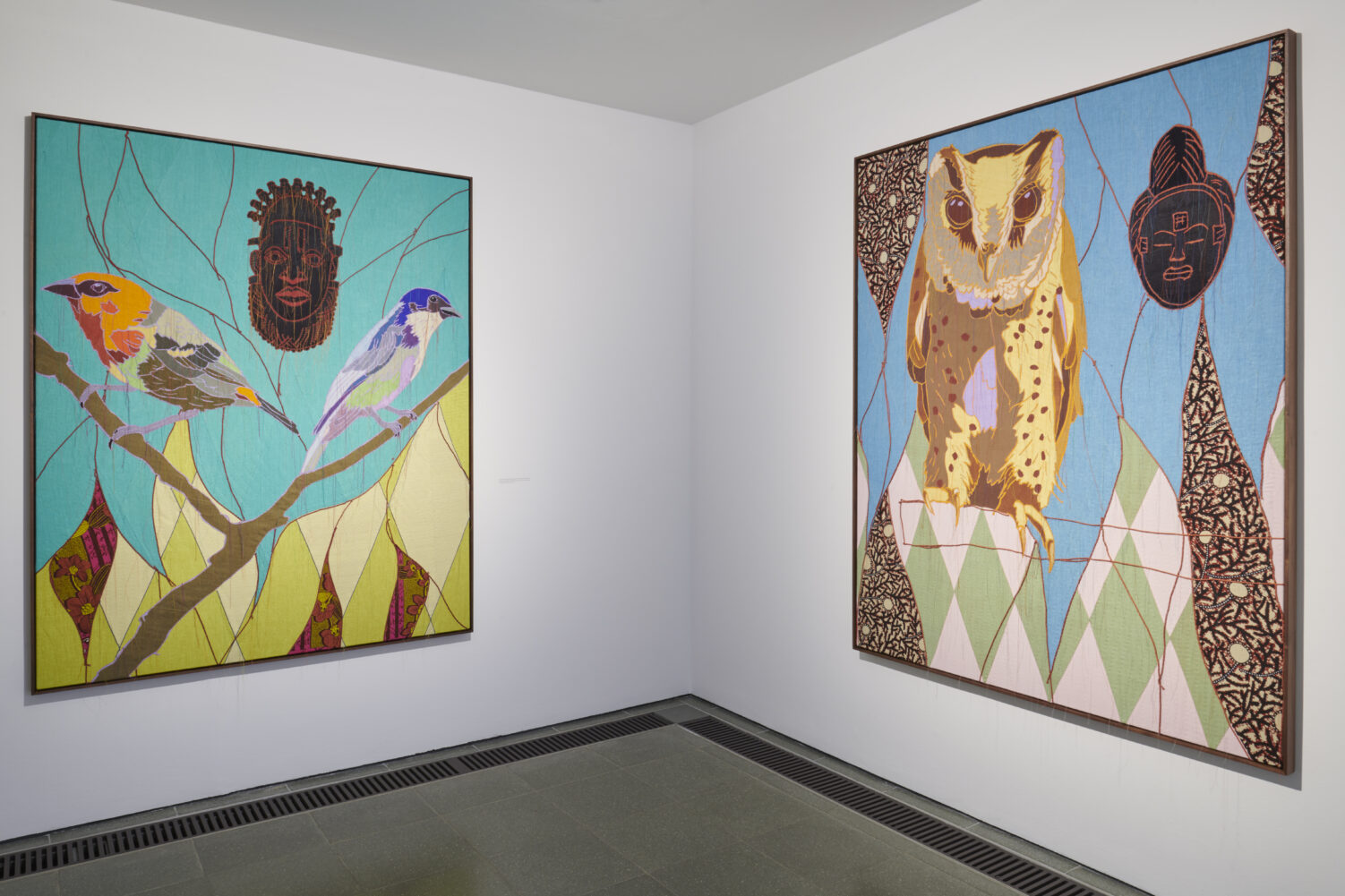 Yinka Shonibare CBE: “Suspended States”, 2024. Installation view, Serpentine South. © Yinka Shonibare CBE 2024. Photo: © Jo Underhill. Courtesy Yinka Shonibare CBE and Serpentine.
Yinka Shonibare CBE: “Suspended States”, 2024. Installation view, Serpentine South. © Yinka Shonibare CBE 2024. Photo: © Jo Underhill. Courtesy Yinka Shonibare CBE and Serpentine.
“We collect and reuse fabrics as much as possible to minimize waste,”
— Yinka Shonibare
Yinka Shonibare’s Guest Project Experimental Space
WW: Your Guest Project experimental space in Hackney and the Guest Artist Space (G.A.S.) Foundation in Nigeria demonstrate your commitment to social practice and community engagement. How do you see the role of artists in addressing social issues and sparking dialogue, both within the art world and beyond?
YS: My work is inherently politically aware and engaged, but I believe that the impact of art should extend beyond galleries. This conviction is what drives my social practice initiatives. The Guest Projects space in Hackney was conceived to provide emerging artists with a platform to experiment and create freely, offering them the opportunity to develop their work in a supportive environment.
Building on this concept, I established the Guest Artist Space (G.A.S.) Foundation in Nigeria, which serves as an international foundation promoting cultural exchange. The foundation’s primary goal is to facilitate understanding and collaboration among artists from diverse backgrounds. When people from different cultures engage with one another, they are more likely to develop mutual respect and understanding, reducing the potential for conflict. The foundation supports multidisciplinary residencies, welcoming over 50 residents from various fields such as architecture, environmental science, art, and curatorial practice.
Additionally, the G.A.S. Foundation includes a farm that practices sustainable agriculture, supporting local food security and providing a unique setting for artists to work. This integration of creative and sustainable practices exemplifies how artists can address social issues and promote dialogue both within and beyond the art world. Through these initiatives, I aim to contribute to social justice, creativity, and cultural understanding on a global scale.
 Yinka Shonibare CBE: “Suspended States”, 2024. Installation view, Serpentine South. © Yinka Shonibare CBE 2024. Photo: © Jo Underhill. Courtesy Yinka Shonibare CBE and Serpentine.
Yinka Shonibare CBE: “Suspended States”, 2024. Installation view, Serpentine South. © Yinka Shonibare CBE 2024. Photo: © Jo Underhill. Courtesy Yinka Shonibare CBE and Serpentine.
“This integration of creative and sustainable practices exemplifies how artists can address social issues and promote dialogue both within and beyond the art world,”
— Yinka Shonibare
WW: The War Library and Sanctuary City are two major installations featured in your Serpentine exhibition. Could you elaborate on the concepts behind these works and their significance within the broader thematic framework of “Suspended States”?
YS: The War Library examines the history of global conflicts and peace efforts. The installation features nearly 6,000 books, each bound in Dutch wax print fabric and inscribed with the names of wars and peace treaties from the 7th century to the present. This immersive visual representation aims to provoke reflection on humanity’s recurring engagement in wars despite numerous efforts to establish peace. By confronting viewers with the sheer volume of conflicts, the installation challenges them to consider why, despite historical lessons, we continue to repeat the same destructive patterns. It addresses the theme of “amnesia” in how societies remember and forget their histories of conflict.
Sanctuary City focuses on places of refuge, highlighting various sanctuaries that offer protection to those displaced by conflict. The installation includes illuminated models of buildings that serve as sanctuaries, such as churches, religious buildings, and other institutions. This work underscores the current global refugee crisis and the importance of compassion and support for displaced individuals. It challenges the increasing hostility towards immigrants and refugees, prompting viewers to reflect on their responsibilities towards those seeking safety. By presenting these sanctuaries, the installation emphasises the human stories behind displacement and encourages a dialogue about humanitarian aid and the ethics of refuge.
Both installations within “Suspended States” aim to engage audiences in a critical examination of global issues related to war, peace, and displacement. They invite viewers to reflect deeply on these themes and inspire conversations about breaking free from harmful cycles and cultivating a more compassionate and just world.
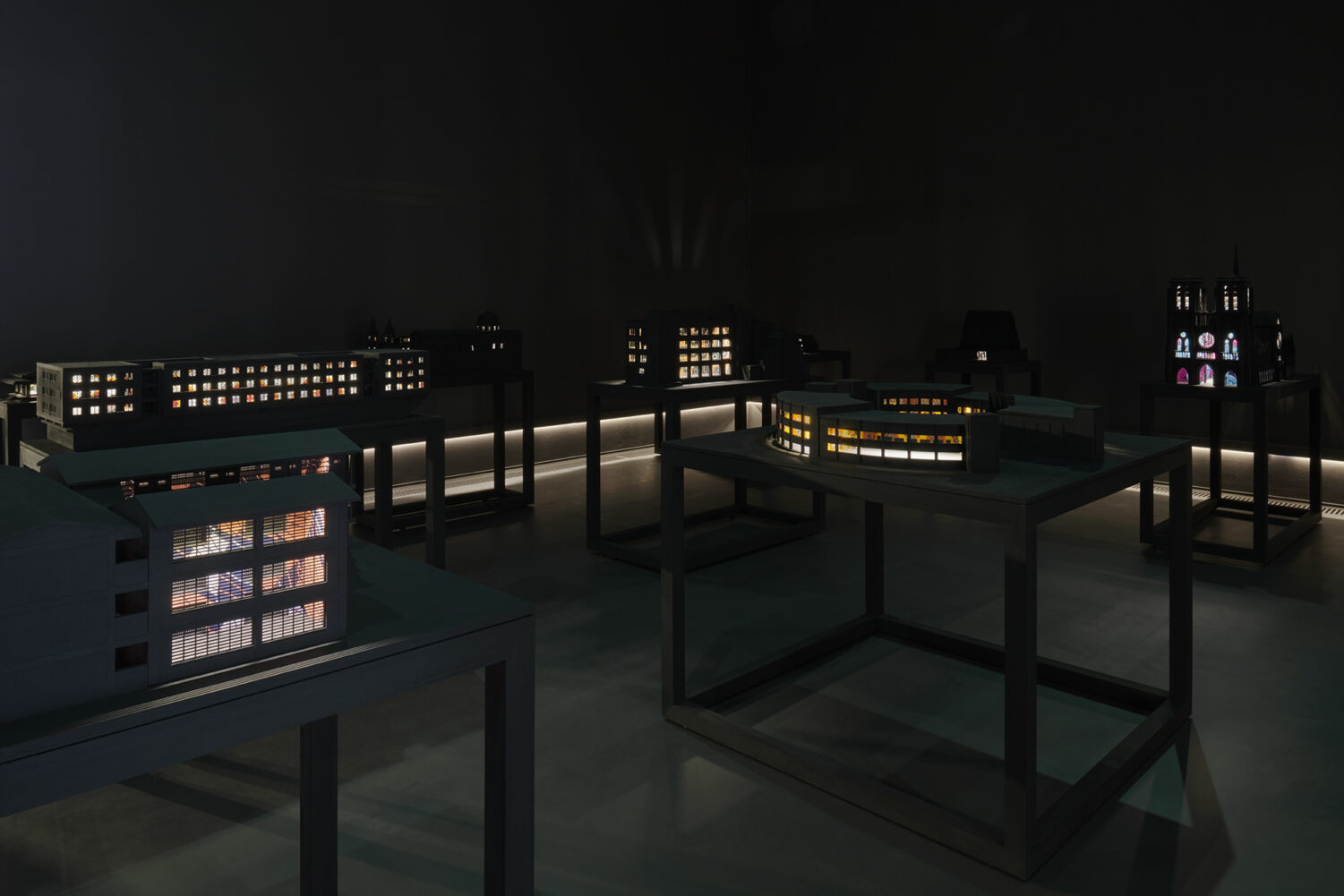 Yinka Shonibare CBE: “Suspended States”, 2024. Installation view, Serpentine South. © Yinka Shonibare CBE 2024. Photo: © Jo Underhill. Courtesy Yinka Shonibare CBE and Serpentine.
Yinka Shonibare CBE: “Suspended States”, 2024. Installation view, Serpentine South. © Yinka Shonibare CBE 2024. Photo: © Jo Underhill. Courtesy Yinka Shonibare CBE and Serpentine.
WW: Your artwork often challenges traditional narratives and confronts historical injustices. How do you navigate the balance between historical critique and artistic expression, particularly when addressing sensitive topics such as colonialism and cultural appropriation?
YS: I believe that art is not about giving instructions; it’s more of a poetic exploration. Just as a beautiful poem can address a serious subject, art can do the same. The beauty of art lies in its ability to provoke thought and evoke emotions without being overtly political. Art is distinct from politics; it provides a poetic lens through which we can explore and understand complex issues.
For example, a powerful song can tackle serious issues, but it remains a song, not a speech. Similarly, art can be a profound tool for engaging with critical subjects like colonialism and cultural appropriation. It allows us to address these sensitive topics in a way that is both impactful and nuanced. Art creates a space for reflection and dialogue, enabling viewers to consider different perspectives and think deeply about the world around them. Through this poetic approach, I aim to challenge traditional narratives and highlight historical injustices, inviting viewers to engage with these themes on a personal and emotional level.
“The beauty of art lies in its ability to provoke thought and evoke emotions without being overtly political,”
— Yinka Shonibare
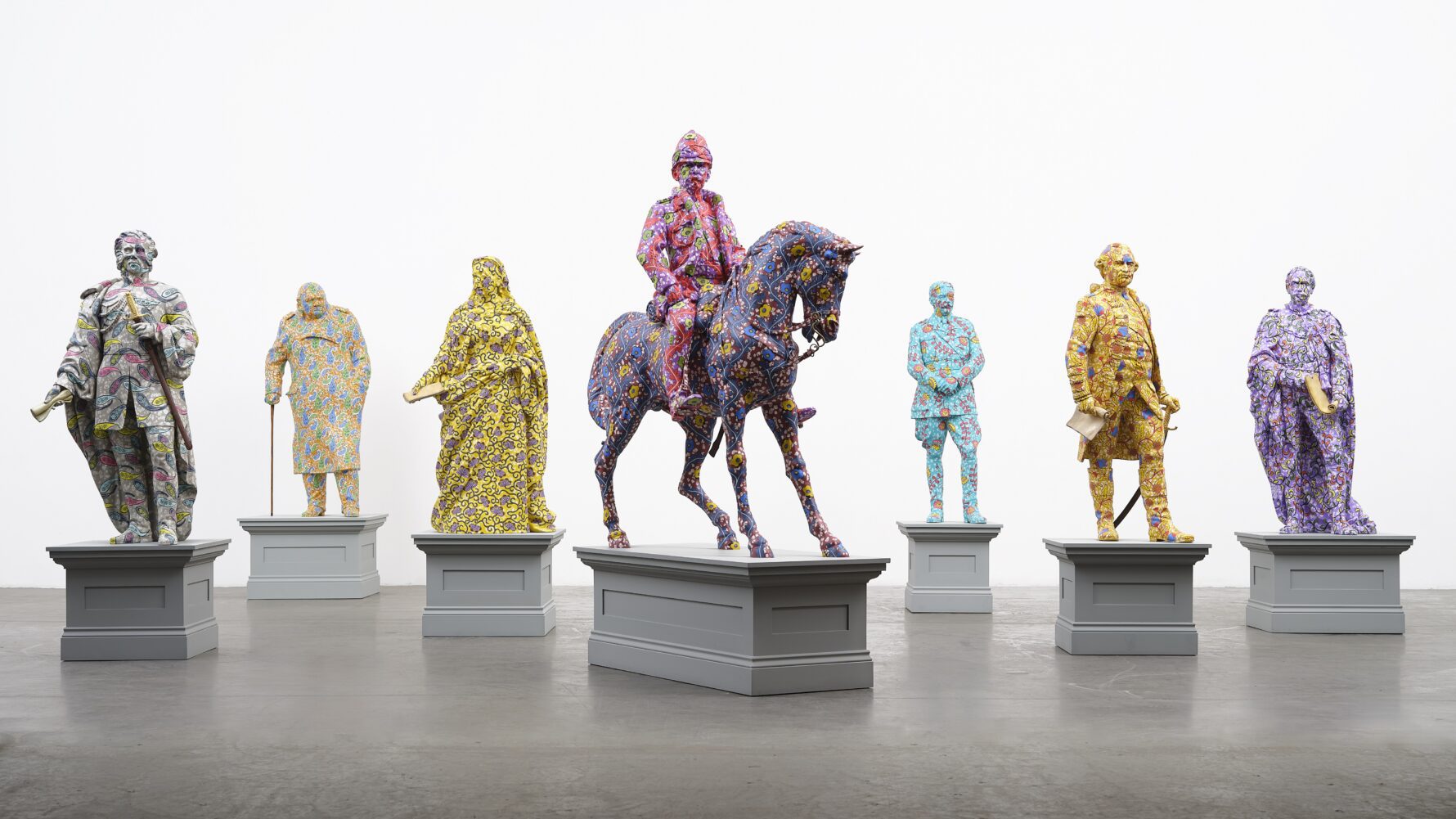 Yinka Shonibare CBE, Decolonised Structures, 2022-23. Fibreglass sculptures, hand-painted with Dutch wax pattern, gold leaf and wooden plinths. Dimensions variable. Commissioned by Sharjah Art Foundation. Courtesy of the artist and Goodman Gallery, Cape Town, Johannesburg, London and New York, James Cohan Gallery, New York and Stephen Friedman Gallery, London and New York. Photographer: Stephen White & Co. © Yinka Shonibare CBE
Yinka Shonibare CBE, Decolonised Structures, 2022-23. Fibreglass sculptures, hand-painted with Dutch wax pattern, gold leaf and wooden plinths. Dimensions variable. Commissioned by Sharjah Art Foundation. Courtesy of the artist and Goodman Gallery, Cape Town, Johannesburg, London and New York, James Cohan Gallery, New York and Stephen Friedman Gallery, London and New York. Photographer: Stephen White & Co. © Yinka Shonibare CBE
WW: Looking ahead, what upcoming projects or initiatives are you particularly excited about, and how do you hope to continue using your platform to advocate for social change and promote cultural understanding?
YS: Well, I have a couple of exciting museum shows on the horizon. While they haven’t been officially announced yet, I can assure you that they are significant projects that I’m very enthusiastic about. These exhibitions will continue to explore the themes central to my work, such as colonialism, identity, and cultural exchange.
In addition to these exhibitions, I remain deeply committed to the mission of the Guest Artist Space (G.A.S.) Foundation. Our foundation supports social justice and nurtures creativity on a global scale. The residency program in Nigeria has been particularly successful, bringing together artists, scientists, and environmentalists from around the world to collaborate and exchange ideas. This interdisciplinary approach is crucial for developing cultural dialogue and mutual understanding. Moreover, our sustainable agriculture initiative in Nigeria is another project I’m passionate about. By promoting local food sustainability, we address both environmental and social issues, creating a holistic model of community support and resilience. This project not only supports local farmers but also educates residents on sustainable practices.
Through these initiatives, I aim to use my platform to inspire meaningful dialogue and promote cultural understanding. It’s about creating spaces where creativity and critical thinking can thrive, and where diverse voices are amplified and respected. I believe that by encouraging these interactions, we can reduce conflicts and foster a more inclusive and empathetic world.
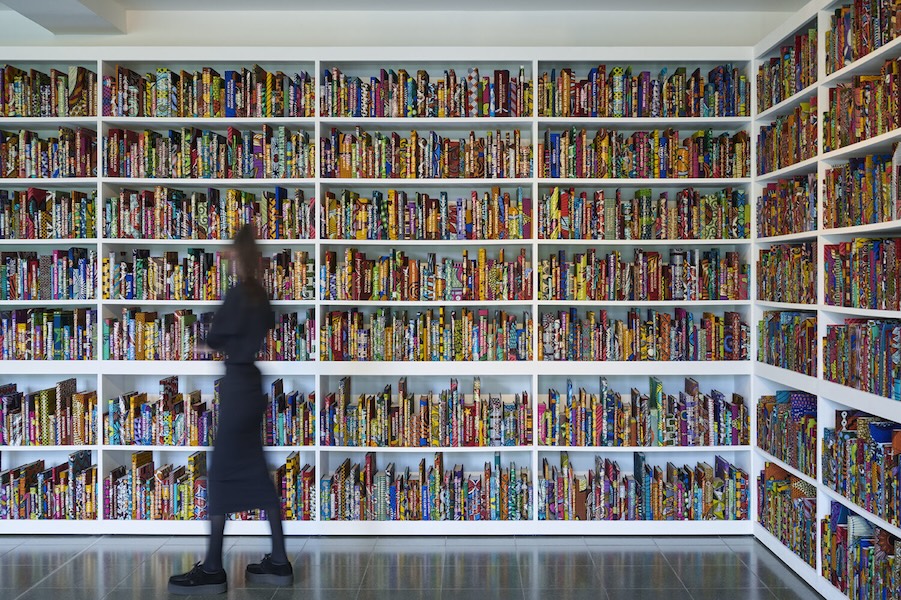 Yinka Shonibare CBE: “Suspended States”, 2024. Installation view, Serpentine South. © Yinka Shonibare CBE 2024. Photo: © Jo Underhill. Courtesy Yinka Shonibare CBE and Serpentine.
Yinka Shonibare CBE: “Suspended States”, 2024. Installation view, Serpentine South. © Yinka Shonibare CBE 2024. Photo: © Jo Underhill. Courtesy Yinka Shonibare CBE and Serpentine.
